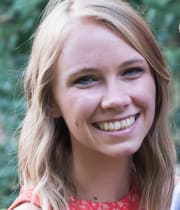Compassion is the cornerstone for SUD treatment

At a glance
• The Healthy Behavior and Function Clinic provides low-barrier substance use disorder care
• The clinic takes a unique approach focused on access, respect and meeting patients where they are
• As Hub and Spoke program, the clinic works with community partners to meet all patient needs
MultiCare’s Healthy Behavior and Function Clinic takes a unique approach to medication-assisted treatment for substance use disorder (SUD) with their low-barrier clinic unlike any in the region.
This approach is key when it comes to SUD, because access is lifesaving, says Lora Jasman, MD, FACP, MultiCare Rockwood Clinic internal and addiction medicine provider. She’s been at the Healthy Behavior and Function Clinic since it opened six years ago.
“The main thing we do differently than primary care or pain management clinics is the idea of ‘no wrong door,’” Dr. Jasman says. “We’re trying to provide care in the moment to the person who needs it.”
That means if a patient doesn’t follow every guideline of their treatment, misses appointments or gives false answers to their provider, they’re not discharged from care.
“These behaviors are often viewed as bad by those of us in health care,” she says. “But these behaviors are often part of the disease, particularly early on.”
It’s a shift in mindset to welcome and meet patients with SUD where they are, she explains. The clinic has a 25 percent no-show rate, which can make for hectic days — but if someone shows up, the staff does all they can to work them in.
It’s a balancing act between being on time for those who make their appointments and meeting the needs of those who drop in.
Comprehensive care and connection
As Spokane County’s designated Hub and Spoke program — a state-funded project to address the opioid epidemic — more than 1,700 patients received care at the clinic from 2022-2023.
Providers manage a patient’s medication-assisted treatment, help ensure they’re staying on top of their other health needs and refer to other health care providers as needed.
“Our clinic is different than many other addiction medicine clinics because our providers came from the primary care setting and have a more hands-on style,” says Tracy Drown, the clinic’s care coordinator. “We have folks who haven’t been to a primary care provider in years, and we can encourage them to follow up with the other aspects of their care.”
“I try to remind them what I see — a person, a friend, a parent. The biggest misconception is that they’re not worth our time.”
That could be encouraging patients to receive preventive care they may not otherwise consider, such as vaccines, mammograms or blood panels, or communicating their concerns with the surgeon as they head into surgery, Drown explains.
The clinic also serves as a starting point for patients to access other resources they may need. As a Hub and Spoke clinic, the team includes a nurse care manager and care coordinator who provide referrals to organizations for housing, behavioral health, food or transportation support. They also help patients navigate complicated systems — like finding an inpatient treatment facility or accessing health benefits.
“It’s huge to get it all in one spot. If they wanted someone to just prescribe their medication and move on, they could find that,” she says. “But we have so much more to offer. We’ve seen huge changes just by them first stepping in here.”
There’s a lot of medical, psychological and social complexity to their patients, Dr. Jasman says. Patients may be unhoused or recently incarcerated and don’t have access to phones or internet.
About half of their patients are living with a mental health disorder, while others may experience various health conditions or diseases as a result of their substance use, she explains.
“Our patients aren’t scary. They just have a lot of needs that our medical community has not had the resources to address,” Dr. Jasman says. “Because of the Hub and Spoke team, we don’t have to do it alone. We all work together to provide resources to get them back on their feet.”
Support without stigma
A lot of the clinic’s work involves breaking down the community stigma around SUD and the internal stigma many patients hold against themselves.
“I often tell my medical students ‘It’s your number-one job to make the patient experience one where they want to come back,’” Dr. Jasman says. “Even if you give them the right care but don’t treat them well, you’ve lost them. We’re not perfect, though, and most patients have had some kind of trauma or fear of a medical facility. But if you can get them to trust you and come back, that’s a huge part of keeping them alive.”
The clinic takes a compassion-forward approach to every interaction and hopes to serve as a point of support and empowerment.
For so many patients, they only see the negatives about themselves, Drown says.
“I try to remind them what I see — a person, a friend, a parent,” she says. “The biggest misconception is that they’re not worth our time. If I was to sum up this population, I’d say that I’ve never met so many people so strong to pull themselves out of holes continuously and just keep going.”
What's next
- Learn more about our compassionate, comprehensive SUD care
- Receive a treatment assessment by calling our behavioral health access center
- Untangling the connection between SUD and domestic violence




